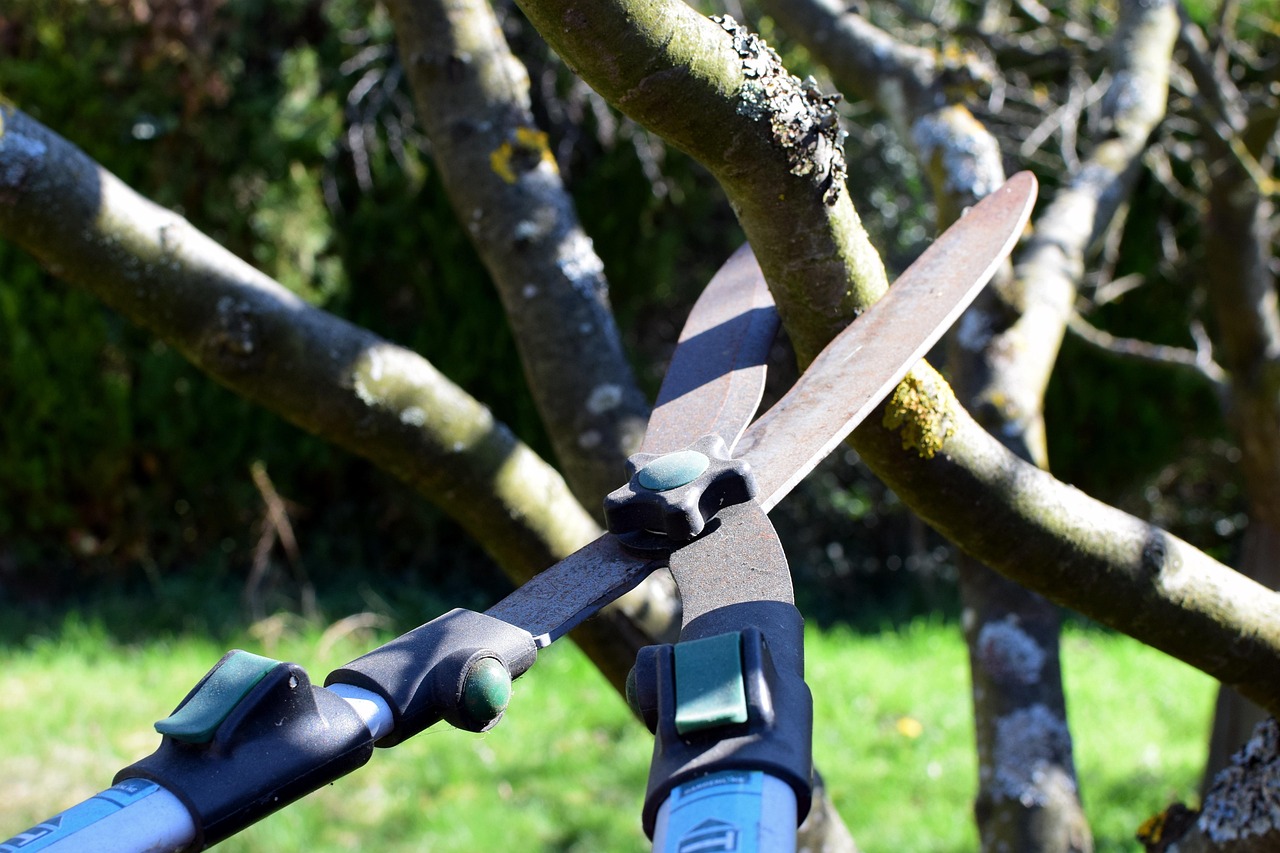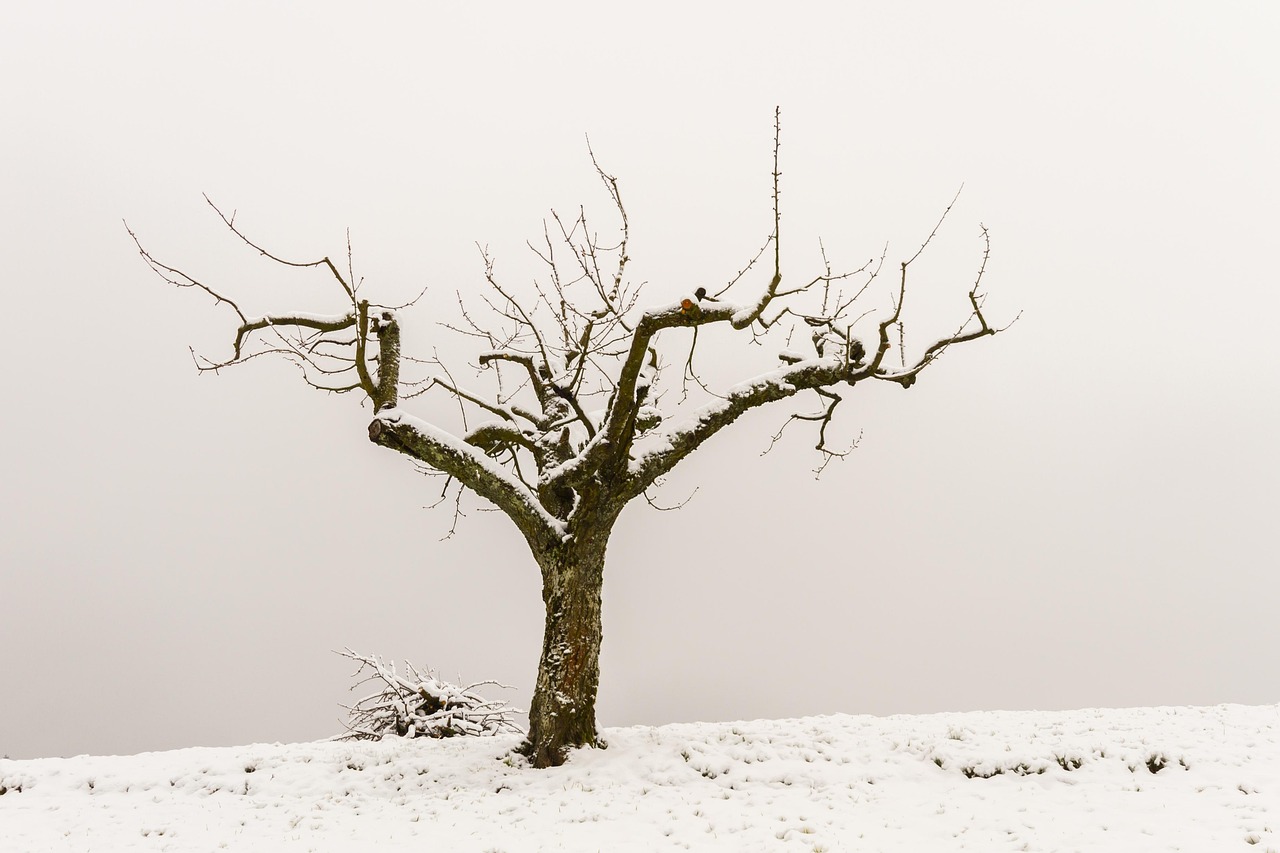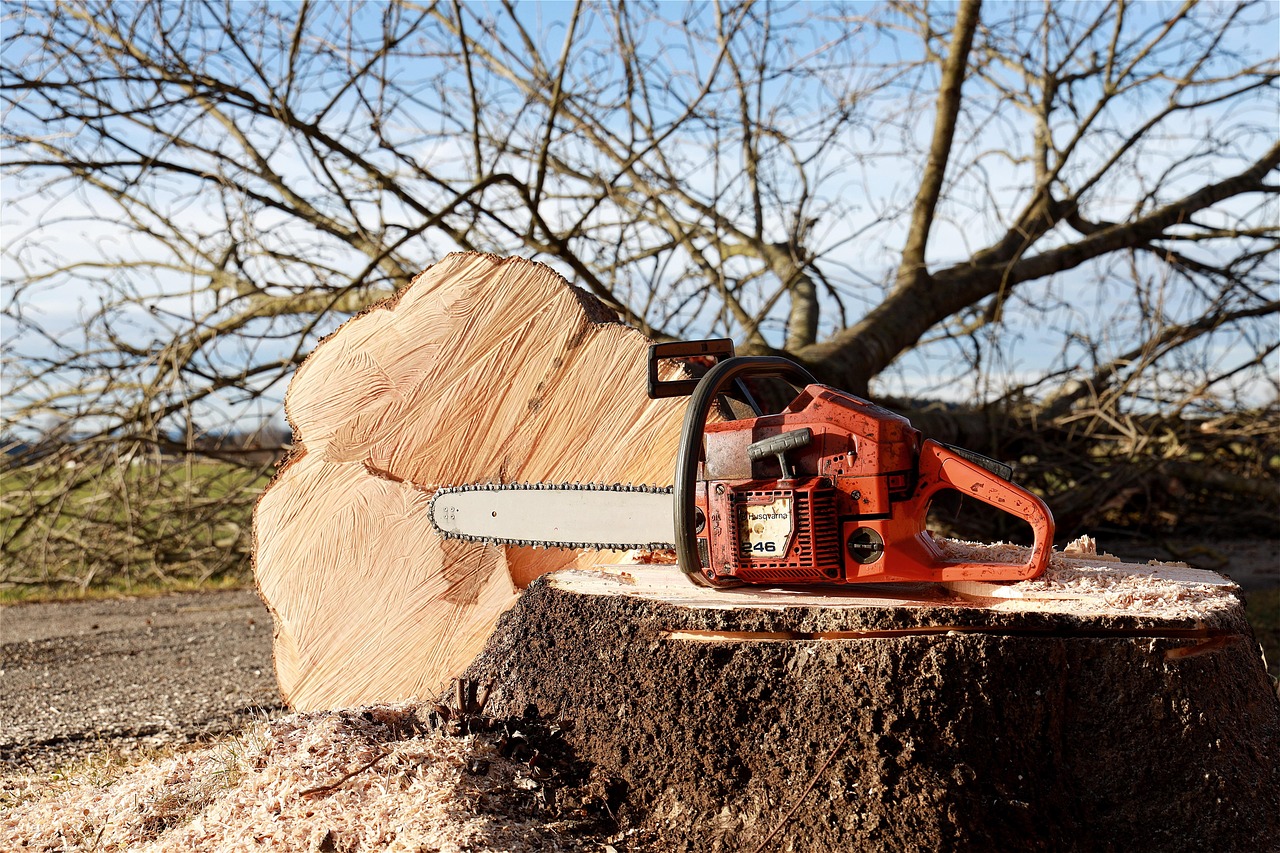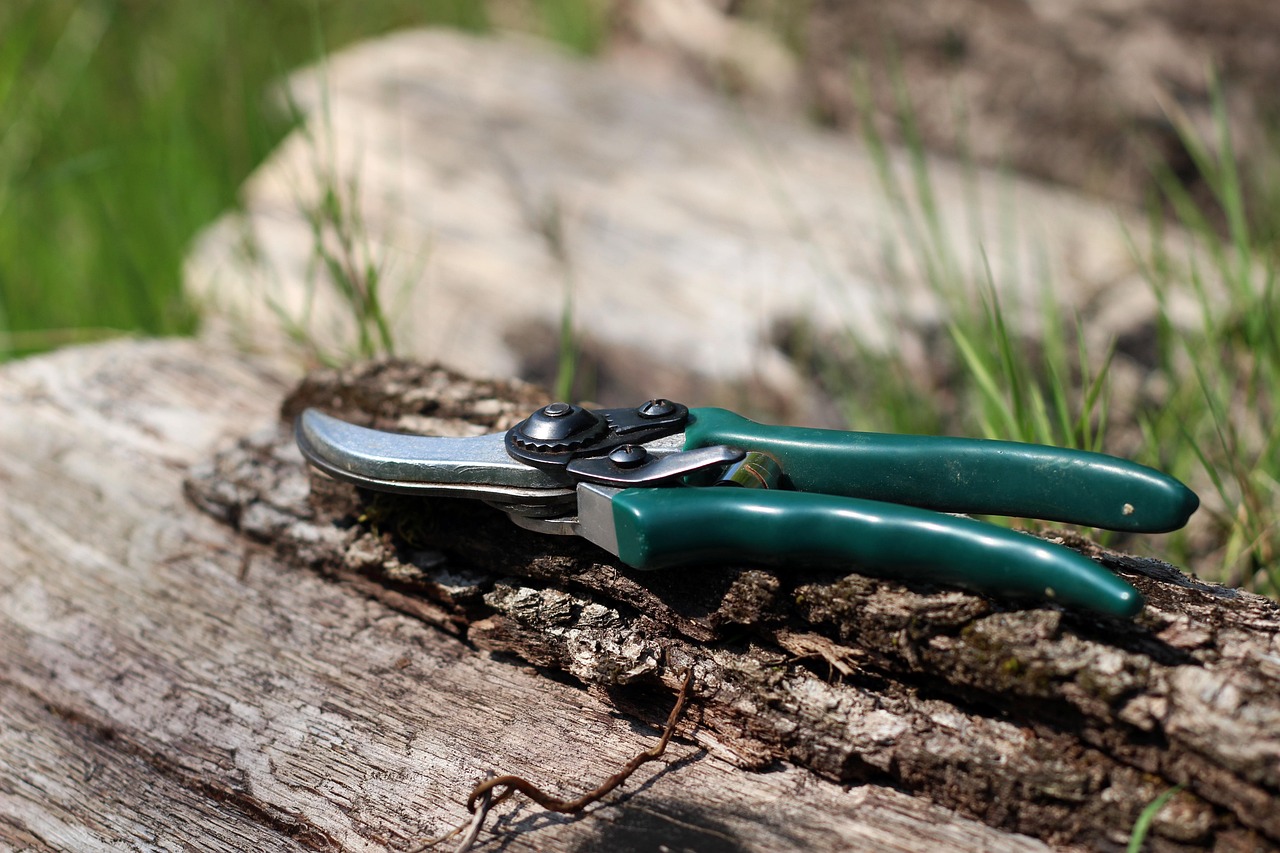Tree pruning is an essential practice for maintaining healthy trees and a sustainable lawn. It enhances tree structure, promotes growth, and fosters biodiversity, contributing to eco-friendly lawn management. Proper pruning can also improve air circulation and sunlight exposure, benefiting both trees and surrounding plants.
In the realm of lawn management, tree pruning plays a pivotal role. Trees are not just ornamental; they serve vital ecological functions. They provide shade, improve air quality, and support wildlife habitats. However, without proper care, trees can become overgrown, unhealthy, or even hazardous. This is where tree pruning comes into play.

Pruning involves the selective removal of certain parts of a tree, such as branches or buds. This process helps to shape the tree, remove dead or diseased wood, and encourage healthy growth. When done correctly, pruning improves the overall health of the tree while also enhancing the aesthetic appeal of your lawn.
The Benefits of Tree Pruning
Understanding the benefits of tree pruning is crucial for anyone interested in eco-friendly lawn management. Here are some key advantages:
- Improved Tree Health: Regular pruning removes dead or diseased branches, reducing the risk of pests and diseases.
- Enhanced Aesthetics: Pruned trees look more attractive and can improve the overall appearance of your property.
- Increased Safety: Removing weak branches prevents them from falling and causing injury or damage during storms.
- Better Growth: Pruning encourages new growth by allowing more sunlight and air to reach the inner branches.
- Environmental Benefits: Healthy trees absorb more carbon dioxide and release oxygen, contributing positively to the ecosystem.
Moreover, trees play a significant role in reducing soil erosion and managing stormwater runoff. By maintaining healthy trees through proper pruning, you also ensure that they can perform these essential functions effectively. This is particularly important in urban areas where green spaces are limited.

When to Prune Trees
Timing is a critical factor in successful tree pruning. Different species of trees have different optimal pruning times. Generally, late winter or early spring is ideal for most trees because they are still dormant. Pruning during this time minimizes stress on the tree and allows for vigorous growth in the spring.
Here are some general guidelines regarding when to prune various types of trees:
| Tree Type | Best Time to Prune |
|---|---|
| Deciduous Trees | Late winter to early spring |
| Evergreen Trees | Late spring after new growth |
| Flowering Trees | After blooming for spring-flowering varieties; late winter for summer-flowering types |
| Fruit Trees | Late winter to early spring |
It’s essential to consider local climate conditions as they can influence when to prune. For instance, in warmer climates, some trees may start their growing season earlier. It’s advisable to observe the specific needs of your trees based on their species and location.

Pruning Techniques
There are several techniques used in pruning, each suitable for different purposes and tree types. Understanding these techniques can help you achieve the best results for your landscape.
The following are some common pruning techniques:
- Crown Thinning: This involves selectively removing branches to increase light penetration and air circulation within the canopy.
- Crown Raising: This technique removes lower branches to raise the crown of the tree, improving clearance and visibility.
- Crown Reduction: This method reduces the height or spread of a tree while maintaining its natural shape.
- Deadwooding: This involves removing dead or dying branches to enhance safety and health.
Each technique serves a distinct purpose. Using the right method is essential in promoting tree health while achieving your desired aesthetic outcome.

If you are unsure about which technique to use or how to prune effectively, consulting with a certified arborist can be beneficial. They can provide expertise tailored to your specific tree species and landscape needs.
In summary, tree pruning is a vital aspect of eco-friendly lawn management. It not only enhances the beauty of your landscape but also contributes positively to the environment. Regular maintenance through proper pruning techniques ensures that your trees remain healthy and thriving for years to come.
Tools for Effective Tree Pruning
Having the right tools is essential for successful tree pruning. The tools you choose can significantly impact the quality of your work and the health of your trees. Here are some common tools used in tree pruning:
- Pruning Shears: Ideal for small branches and light pruning tasks, these are essential for any gardener.
- Loppers: These are larger than pruning shears and are used for cutting thicker branches.
- Hand Saws: A hand saw is useful for cutting larger branches that cannot be handled by pruners or loppers.
- Chainsaws: For very large branches or tree removals, a chainsaw provides the necessary power.
- Pole Pruners: These extendable tools allow you to reach higher branches without needing a ladder.
- Safety Gear: Protective eyewear, gloves, and hard hats are vital for ensuring your safety while pruning.
Each tool serves a specific purpose, and using the correct one will make your pruning task easier and more efficient. Ensure that your tools are sharp and well-maintained. Dull tools can cause damage to the tree and make the job harder.
Safety Precautions When Pruning
Tree pruning can be hazardous, especially when working with tall trees or large branches. Following safety precautions is imperative to protect yourself and those around you. Here are some essential safety tips:
- Wear Protective Gear: Always use safety goggles, gloves, and a hard hat to protect against falling debris.
- Check Your Surroundings: Before starting, ensure the area is clear of obstacles, and be aware of nearby power lines.
- Use Proper Ladder Safety: If using a ladder, make sure it is stable and placed on level ground. Never overreach while on a ladder.
- Work with a Partner: It’s safer to have someone with you, especially when working on larger trees or using power tools.
- Know Your Limits: If a tree is too large or dangerous to prune safely, consider hiring a professional arborist.
By taking these precautions, you can minimize the risk of accidents and injuries during the pruning process. Safety should always be your top priority when handling tools and working at heights.
Common Mistakes in Tree Pruning
Even seasoned gardeners can make mistakes when pruning trees. Being aware of common pitfalls can help you avoid them. Here are some frequent mistakes to watch out for:
- Over-Pruning: Removing too many branches can stress the tree and affect its health. Always adhere to the principle of “less is more.”
- Improper Cuts: Making cuts at the wrong angle or too close to the trunk can lead to decay and disease. Learn to make proper cuts.
- Ignoring Tree Species: Different species have unique needs and growth patterns. Always research the specific requirements for the trees you are pruning.
- Timing Mistakes: Pruning at the wrong time can harm the tree. Understand the best times for pruning different species.
- Neglecting Safety: Failing to follow safety protocols can lead to accidents. Always prioritize safety when pruning.
Avoiding these common mistakes will enhance your effectiveness and ensure that your trees remain healthy and beautiful. Knowledge and careful planning are key components of successful tree pruning.
The Role of Tree Pruning in Biodiversity
Tree pruning not only helps individual trees but also contributes to overall biodiversity in your garden or landscape. By maintaining healthy trees, you create an environment that supports various forms of wildlife. Here’s how pruning influences biodiversity:
- Encourages Diverse Habitats: Healthy trees provide nesting sites for birds and habitats for insects, enhancing local ecosystems.
- Promotes Plant Health: By allowing more sunlight and air circulation, other plants in the vicinity benefit from healthier growth conditions.
- Supports Pollinators: Well-pruned flowering trees attract pollinators like bees and butterflies, which are crucial for plant reproduction.
- Reduces Pest Infestations: Regular pruning helps prevent pest problems, which can otherwise affect both trees and other plants.
The interconnectedness of trees with their environment highlights the importance of caring for them through practices like proper pruning. This fosters not just individual tree health but also promotes a thriving ecosystem.
By understanding the relationship between tree care and biodiversity, you can make informed decisions that benefit both your landscape and the environment. Embracing eco-friendly practices will lead to a more sustainable approach to lawn management.
Seasonal Considerations for Tree Pruning
Understanding the seasons can greatly influence how and when you prune your trees. Each season presents unique challenges and opportunities for tree care. Here is a breakdown of how each season affects tree pruning:
Spring
Spring is a time of growth and renewal for many trees. While it may be tempting to prune during this vibrant season, caution is advised. Pruning in early spring can expose trees to sap loss and stress just as they begin their growth cycle. However, late spring can be beneficial for certain species, particularly those that bloom later in the season.
- Best Practices: Focus on removing any dead or damaged branches from the winter months.
- Considerations: Prune flowering trees just after they bloom to avoid cutting off new flower buds.
Summer
Summer pruning is often used to control the size and shape of trees. It can also help improve sun exposure for inner branches, promoting healthy growth. However, excessive pruning during this time can stress the tree.
- Best Practices: Use summer pruning to manage growth and remove any suckers or water sprouts.
- Considerations: Be mindful of heat stress. Water trees adequately before and after pruning.
Autumn
Autumn is typically not recommended for major pruning. Trees are preparing for dormancy, and cutting them during this time can hinder their ability to store energy for the winter months. However, it can be a good time for light maintenance.
- Best Practices: Remove diseased or dead branches to prevent further spread during the colder months.
- Considerations: Avoid heavy pruning, as this can leave trees vulnerable to winter damage.
winter
Winter is often considered the best time for pruning most deciduous trees since they are dormant. This period allows for easier visibility of the tree structure, making it simpler to identify which branches need to be pruned.
- Best Practices: Focus on crown thinning and removing dead wood to promote healthy growth come spring.
- Considerations: Be cautious of frozen branches, as they can be brittle and prone to breakage.
Pruning Specific Types of Trees
Different tree species have unique needs when it comes to pruning. Understanding these differences is essential for effective tree care. Here are some specific types of trees and their pruning requirements:
Deciduous Trees
Deciduous trees shed their leaves annually and generally benefit from winter pruning. Focus on maintaining shape and removing any dead or crossed branches.
- Examples: Maple, Oak, Birch
- Pruning Tips: Remove suckers at the base and keep the center of the tree open for light penetration.
Evergreen Trees
Evergreens retain their foliage year-round and require different approaches. Pruning should aim at maintaining their shape without removing too much foliage.
- Examples: Pine, Spruce, Fir
- Pruning Tips: Lightly trim the tips of branches to enhance shape but avoid cutting into old wood, as this can harm the tree.
Flowering Trees
The timing for pruning flowering trees depends on their blooming cycle. Spring-flowering varieties should be pruned right after flowering, while summer-flowering types are pruned in winter or early spring.
- Examples: Cherry, Dogwood, Magnolia (spring-flowering); Crape Myrtle (summer-flowering)
- Pruning Tips: Focus on removing dead flowers and thinning out crowded areas to promote airflow.
The Environmental Impact of Tree Pruning
The practice of tree pruning has several environmental benefits that contribute positively to eco-friendly lawn management. By understanding these impacts, you can appreciate the broader significance of your efforts.
Carbon Sequestration
Healthy trees play an essential role in carbon sequestration, capturing carbon dioxide from the atmosphere. Proper pruning helps maintain tree health, allowing them to absorb more carbon over their lifetime.
Soil Health Improvement
The presence of healthy trees contributes to better soil quality. Tree roots help prevent soil erosion and improve water retention. Pruning encourages a stronger root system by promoting healthy growth.
Biodiversity Support
As previously mentioned, well-maintained trees support a diverse range of wildlife. Pruning encourages healthy habitats where birds, insects, and other wildlife can thrive, contributing to ecosystem health.
| Environmental Benefit | Description |
|---|---|
| Carbon Sequestration | Trees absorb CO2, helping mitigate climate change effects. |
| Soil Health Improvement | Trees prevent erosion and enhance soil structure through their root systems. |
| Biodiversity Support | Healthy trees provide habitats for various species, promoting ecosystem balance. |
Understanding these environmental impacts reinforces the importance of responsible tree care practices like pruning. By prioritizing eco-friendly methods in lawn management, you contribute positively to your local environment and beyond.
Advanced Tree Pruning Techniques
As you become more experienced in tree pruning, you may want to explore advanced techniques that can further enhance the health and beauty of your trees. These methods require a deeper understanding of tree biology and growth patterns, but they can yield impressive results.
Espalier
Espalier is a technique that involves training trees to grow flat against a wall or trellis. This method not only saves space but also allows for easier access to fruit and flowers. It is particularly popular for fruit trees in small gardens.
- Benefits: Maximizes space, enhances sunlight exposure, and creates a visually appealing landscape.
- How to Do It: Regularly prune the tree to maintain its shape and direct growth towards the support structure.
Pollarding
Pollarding is a practice that involves cutting back the upper branches of a tree to encourage new growth. This method is often used on trees that are near roads or pathways to keep them manageable.
- Benefits: Reduces height while maintaining a lush appearance, providing shade and beauty without obstructing views.
- How to Do It: Conduct pollarding during late winter or early spring before new growth begins.
Coppicing
Coppicing is similar to pollarding but involves cutting the tree down to ground level to encourage multiple new shoots. This technique is commonly used for species like willow and hazel.
- Benefits: Provides a sustainable source of wood and promotes bushy, dense growth.
- How to Do It: Cut the tree back every few years during winter to rejuvenate it.
Community Engagement and Education
Tree pruning can also be an opportunity for community engagement and education. Local workshops or community events focused on tree care can foster awareness about the importance of trees in urban ecosystems.
- Workshops: Consider organizing or attending local workshops that teach proper pruning techniques and the environmental benefits of trees.
- School Programs: Collaborate with schools to create programs that educate students about tree care and conservation.
- Volunteer Days: Participate in or organize community tree care days where volunteers come together to prune and care for local trees.
These initiatives not only educate participants but also strengthen community ties and promote a collective commitment to environmental stewardship.
Using Technology in Tree Pruning
The advancement of technology has influenced many aspects of horticulture, including tree pruning. Various tools and software can assist in assessing tree health and planning pruning strategies.
- Drones: Drones equipped with cameras can provide aerial views of trees, helping identify issues such as canopy density or pest infestations.
- Tree Health Monitoring Apps: Mobile applications can help track the health of trees, schedule maintenance, and provide reminders for pruning activities.
- Software for Planning: Some software programs allow for better visualization of tree structures and can aid in planning pruning cuts more effectively.
Incorporating technology into your tree care routine can enhance efficiency and effectiveness, leading to healthier landscapes.
Final Thoughts
Tree pruning is not just a task; it is an integral part of eco-friendly lawn management that contributes significantly to the health of your landscape and the environment. Through effective pruning practices, you can enhance tree health, promote biodiversity, and support local ecosystems. Understanding seasonal changes, employing appropriate techniques, and using the right tools are all essential components of successful pruning.
The environmental benefits of well-maintained trees cannot be overstated. They help improve air quality, combat climate change through carbon sequestration, prevent soil erosion, and provide habitats for wildlife. By adopting advanced pruning techniques and engaging with your community, you can foster a culture of care for our natural surroundings.
As we move forward in our gardening and landscaping endeavors, let us prioritize responsible tree care that aligns with eco-friendly principles. Each cut made with purpose and knowledge contributes to creating a healthier environment for future generations. By embracing these practices, we can cultivate thriving landscapes that not only beautify our surroundings but also sustain our planet.
